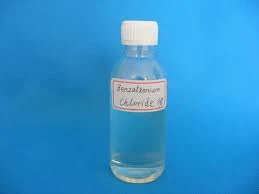Flocculant Solutions for Effective Water Treatment in Environmental Management
Flocculant Chemicals for Water Treatment Essential Tools for Purifying Our Water
Water is an essential resource for life, and its purification is crucial for public health, environmental sustainability, and industrial applications. One of the key elements in water treatment processes is the use of flocculant chemicals. These agents play a vital role in enhancing the efficiency of water treatment systems by promoting the aggregation of suspended particles, which can then be removed more easily.
What Are Flocculants?
Flocculants are chemical substances that promote the agglomeration of individual particles into larger agglomerates or flocs. These flocs can then settle out of the water column, making it easier to filter the water or separate it from impurities. Flocculants can be natural, synthetic, or semi-synthetic, and they are selected based on the specific needs of the water treatment process at hand.
Types of Flocculants
1. Natural Flocculants Derived from natural sources, these flocculants include substances like starch, guar gum, and other biopolymers. They are often favored for their environmental compatibility and are widely used in potable water treatment systems.
2. Synthetic Flocculants These are man-made polymers, often produced from petrochemical sources. They are highly effective and can be engineered to meet specific flocculation needs. Common synthetic flocculants include polyacrylamide and polyamines. Their effectiveness often relates to their molecular weight and charge density.
3. Biopolymer Flocculants Innovations in water treatment have led to the development of biopolymer-based flocculants that are biodegradable and environmentally friendly. They offer promising results in wastewater treatment facilities focused on reducing chemical footprint.
Mechanisms of Flocculation
flocculant chemicals for water treatment

The flocculation process generally occurs in several stages. Initially, coagulants (such as aluminium sulfate or ferric chloride) are added to destabilize the particles in water, enabling them to collide and combine into larger aggregates. Following this, flocculants are introduced to enhance these aggregates’ growth, promoting the formation of larger and heavier flocs that can be easily removed from the treated water.
This process is vital in various water treatment applications, including drinking water production, wastewater treatment, and industrial processes. The choice of flocculant often depends on factors such as the water's composition, the types of contaminants present, and the desired quality of the treated water.
Applications in Water Treatment
Flocculants are integral to various sectors. In municipal water treatment plants, they help to clarify drinking water, ensuring compliance with health standards. In industrial settings, flocculants are used to treat process water and reduce waste. Mining operations utilize flocculants to separate valuable minerals from ore, while agricultural industries apply them to manage wastewater from livestock and crop production.
Benefits of Using Flocculants in Water Treatment
The incorporation of flocculant chemicals in water treatment offers numerous benefits. They significantly enhance the efficiency of sedimentation processes, reducing the required time for water clarification. This leads to lower operational costs and improved water quality. Additionally, the use of flocculants can decrease the amount of sludge generated, mitigating waste disposal challenges.
Conclusion
In summary, flocculant chemicals are indispensable components in the toolkit for water treatment. Their ability to facilitate the aggregation of suspended particles makes them essential for producing clean, safe water in a variety of applications. As we strive toward more sustainable practices and improved water management systems, understanding and utilizing the right flocculants will continue to be crucial for protecting and purifying our most vital resource water.
-
lk-319-special-scale-and-corrosion-inhibitor-for-steel-plants-advanced-solutions-for-industrial-water-systemsNewsAug.22,2025
-
flocculant-water-treatment-essential-chemical-solutions-for-purification-processesNewsAug.22,2025
-
isothiazolinones-versatile-microbial-control-agents-for-industrial-and-consumer-applicationsNewsAug.22,2025
-
scale-inhibitor-key-solutions-for-water-system-scale-preventionNewsAug.22,2025
-
organophosphonates-versatile-scale-inhibitors-for-industrial-water-systemsNewsAug.22,2025
-
scale-and-corrosion-inhibitor-essential-chemical-solutions-for-water-system-maintenanceNewsAug.22,2025





